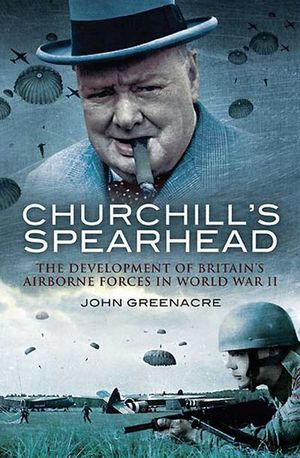Churchill's Spearhead
Published by Pen & Sword Books
This book covers the inception, growth and employment of Britains airborne forces (parachute and glider-borne formations) between June 1940 and March 1945. It takes a comparative approach and follows tailored lines of development. Each of these lines—politics and policy, equipment and technology, personnel and training, command and control and concepts and doctrine—influence each other.The contents include:Politics and Policy: The political environment within which the major decisions were made concerning the concept of development of Britains airborne forces. Churchills personal contribution, the effect of inter-service rivalry and the influence of other government departments. Equipment and Technology: The methods and obstacles of procuring and supplying the bespoke equipment required by airborne forces. The supply of combat equipment, the provision of support aircraft and the procurement of gliders. Personnel and Training: The effort incurred to man the new force and the effect of different approaches to recruitment and training. The selection and recruitment of airborne personnel, the individual training of paratroops and glider pilots and the role of collective training prior to operations. Command and Control: The ability of individuals in key appointments to influence the path of development and the operational and tactical employment of the force. The reaction and approach of higher commanders to the new capability, the selection and impact of commanders within the airborne force and the influence of the airborne staff. Concept and Doctrine: Examines the manner in which Britains airborne forces were employed and performed on operations in the Mediterranean and northwest Europe. How the development of the airborne concept was influenced by physical constraints (equipment and personnel), the ideas of higher commanders and the German example. The impact of individual commanders and physical limitations.
BUY NOW FROM
COMMUNITY REVIEWS

